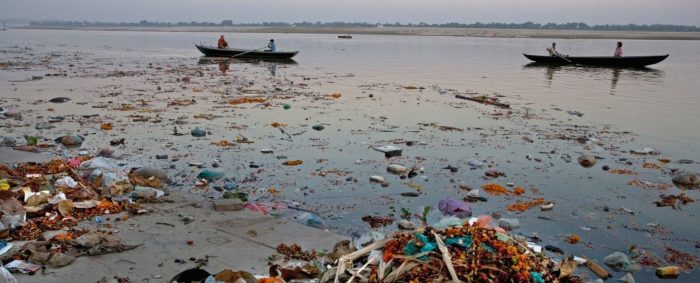Delving into the realm of air pollution mysteries answer key, this comprehensive guide unveils the complexities of air pollution, its far-reaching effects, and the innovative strategies employed to mitigate its impact. Embark on an enlightening journey to unravel the mysteries surrounding air quality and discover the key to a healthier, more sustainable future.
Air Pollution Basics
Air pollution refers to the presence of harmful or excessive substances in the Earth’s atmosphere. These substances can have adverse effects on human health, ecosystems, and the environment as a whole.
Air pollutants can be classified into two main categories: primary pollutants and secondary pollutants. Primary pollutants are emitted directly into the atmosphere, while secondary pollutants are formed through chemical reactions between primary pollutants or between primary pollutants and other components of the atmosphere.
Some common sources of air pollution include:
- Combustion of fossil fuels (e.g., in vehicles, power plants, and industrial processes)
- Industrial processes (e.g., manufacturing, mining, and chemical production)
- Agriculture (e.g., livestock farming, fertilizer use, and crop burning)
- Deforestation and land-use changes
- Natural sources (e.g., volcanic eruptions, wildfires, and dust storms)
Air pollution can have a wide range of adverse effects on human health, including:
- Respiratory problems (e.g., asthma, bronchitis, and lung cancer)
- Cardiovascular disease
- Neurological damage
- Cancer
- Reproductive and developmental problems
Air pollution can also harm ecosystems and the environment by:
- Damaging vegetation and crops
- Acidifying lakes and rivers
- Depleting the ozone layer
- Contributing to climate change
Major air pollution events, such as the Great Smog of London in 1952 and the Bhopal gas leak in 1984, have demonstrated the devastating impacts of air pollution on human health and the environment.
Air Pollution Monitoring and Measurement

Monitoring and measuring air pollution is essential for understanding its extent, sources, and trends. Various methods are used to collect and analyze air pollution data, including:
- Air quality monitoring stations
- Satellite remote sensing
- Airborne monitoring
- Chemical analysis of air samples
Air quality indices (AQIs) are used to communicate the level of air pollution to the public. AQIs are based on the concentrations of specific pollutants, such as particulate matter, ozone, and nitrogen dioxide. Air quality standards are established by regulatory agencies to protect public health and the environment.
Challenges and limitations of air pollution monitoring include:
- The complex and dynamic nature of air pollution
- The need for accurate and reliable data
- The cost and logistical challenges of monitoring
- The need for long-term data sets to identify trends
Air Pollution Control Strategies: Air Pollution Mysteries Answer Key
Various strategies are employed to control air pollution, including:
- Regulation: Setting and enforcing emission standards for vehicles, industries, and other sources
- Technology: Developing and implementing pollution control technologies, such as catalytic converters, scrubbers, and electrostatic precipitators
- Education and awareness: Raising awareness about the impacts of air pollution and promoting behavioral changes
- Economic incentives: Providing financial incentives to businesses and individuals to reduce emissions
The effectiveness of air pollution control strategies depends on a range of factors, including the specific pollutants being targeted, the cost and feasibility of the strategy, and the level of public support.
Successful air pollution control programs have been implemented in many cities and regions around the world. For example, the Clean Air Act in the United States has significantly reduced air pollution levels since its enactment in 1970.
Emerging Air Pollution Concerns
Air pollution concerns are constantly evolving, with new challenges emerging due to factors such as climate change and urbanization.
Climate Change and Air Pollution, Air pollution mysteries answer key
Climate change is expected to increase the frequency and intensity of extreme weather events, such as heat waves and wildfires, which can release harmful air pollutants.
Additionally, climate change is altering the distribution of air pollutants, leading to increased levels in some areas and decreased levels in others.
Indoor Air Pollution
Indoor air pollution is a significant concern, especially in developing countries where indoor cooking and heating rely on solid fuels.
Indoor air pollution can be caused by a variety of sources, including building materials, cleaning products, and tobacco smoke.
Emerging air pollution concerns require innovative solutions and continued research to understand their impacts and develop effective control strategies.
Commonly Asked Questions
What are the primary sources of air pollution?
Air pollution originates from various sources, including industrial processes, transportation, power generation, residential heating, and agricultural activities.
How does air pollution impact human health?
Air pollution poses significant risks to human health, contributing to respiratory illnesses, cardiovascular diseases, and even cancer.
What are the key strategies for controlling air pollution?
Effective air pollution control strategies encompass emission regulations, technological advancements, and promoting sustainable practices in industry, transportation, and energy production.
